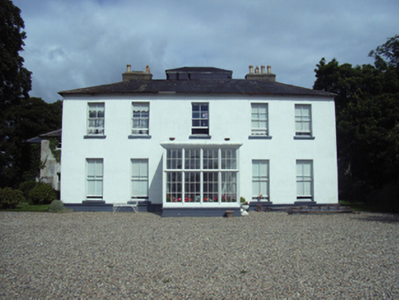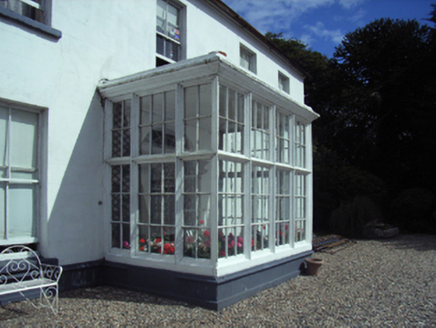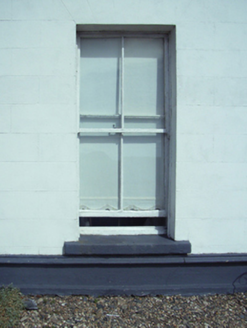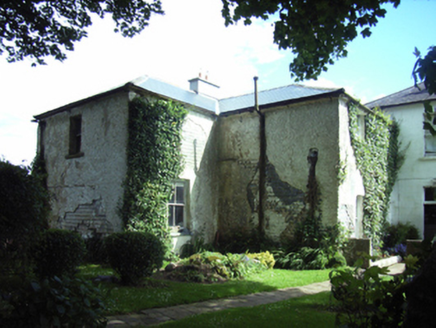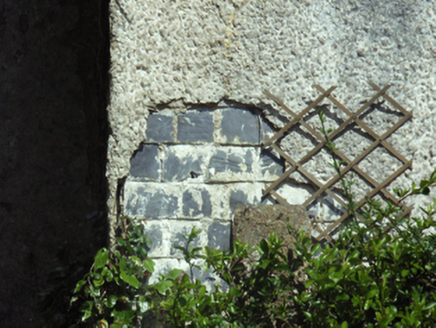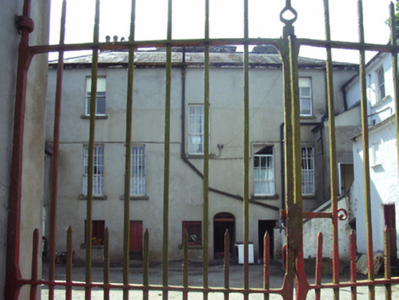Survey Data
Reg No
15608011
Rating
Regional
Categories of Special Interest
Architectural, Artistic, Historical, Social
Previous Name
Clonard Little
Original Use
Country house
In Use As
Country house
Date
1800 - 1840
Coordinates
302326, 120625
Date Recorded
05/07/2005
Date Updated
--/--/--
Description
Detached five-bay (two-bay deep) two-storey over basement country house, extant 1840, on a T-shaped plan centred on single-bay single-storey flat-roofed projecting porch to ground floor; three- or five-bay full-height rear (north) elevation. Hipped slate roof on a quadrangular plan with clay ridge tiles, rendered chimney stacks on axis with ridge having corbelled stepped capping supporting terracotta or yellow terracotta octagonal pots, and cast-iron rainwater goods on rendered eaves retaining cast-iron downpipes. Rendered, ruled and lined walls on moulded rendered cushion course on rendered plinth; cement rendered surface finish to rear (north) elevation. Segmental-headed central door opening into country house with cut-granite threshold, cut-granite doorcase with pilasters on plinths supporting "Cyma Recta"- or "Cyma Reversa"-detailed cornice framing timber panelled double doors having fanlight. Square-headed window openings with cut-granite sills, and concealed dressings framing two-over-two timber sash windows. Square-headed window openings to rear (north) elevation centred on square-headed window opening (half-landing) with cut-granite sills, and concealed dressings framing nine-over-six (ground floor) or two-over-two (first floor) timber sash windows without horns centred on nine-over-six timber sash window without horns. Interior including (ground floor): central hall retaining carved timber surrounds to door openings framing timber panelled doors; and carved timber surrounds to door openings to remainder framing timber panelled doors with timber panelled shutters to window openings. Set in landscaped grounds.
Appraisal
A country house representing an important component of the domestic built heritage of the suburban outskirts of Wexford with the architectural value of the composition, one abutting an earlier house showing a plastered slate hung surface finish, confirmed by such attributes as the deliberate alignment maximising on scenic vistas overlooking gently rolling grounds; the compact rectilinear plan form centred on a Classically-detailed doorcase demonstrating good quality workmanship in a silver-grey granite, albeit one largely concealed behind an expressed porch; and the diminishing in scale of the openings on each floor producing a graduated visual impression. Having been well maintained, the elementary form and massing survive intact together with substantial quantities of the original fabric, both to the exterior and to the interior, including some crown or cylinder glazing panels in hornless sash frames: meanwhile, contemporary joinery; chimneypieces; and plasterwork refinements, all highlight the artistic potential of the composition. Furthermore, adjacent outbuildings (extant 1840); and a nearby gate lodge (see 15608012), all continue to contribute positively to the group and setting values of a self-contained estate having historic connections with the Richards family including Captain Loftus Richards (d. 1837) of the 71st Regiment of Foot (Lewis 1837 II, 459); William Browne (d. 1898) and Martha Mary Browne (d. 1907) 'formerly of Little Clonard and late of New Street Wexford' (Calendars of Wills and Administrations 1898, 44; 1908, 46); and the Sutton family including Samuel Raymond Sutton (d. 1899) and Martha Sutton (d. 1903) 'late of Little Clonard [and] Richmond-terrace Wexford' (Calendars of Wills and Administrations 1900, 499; 1904, 471).

